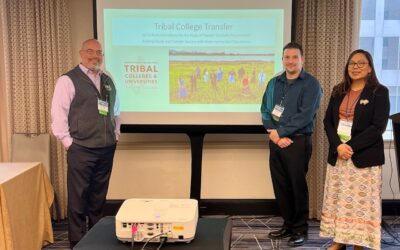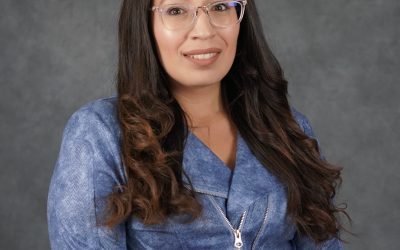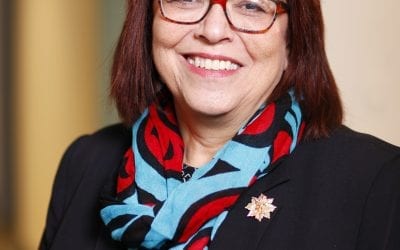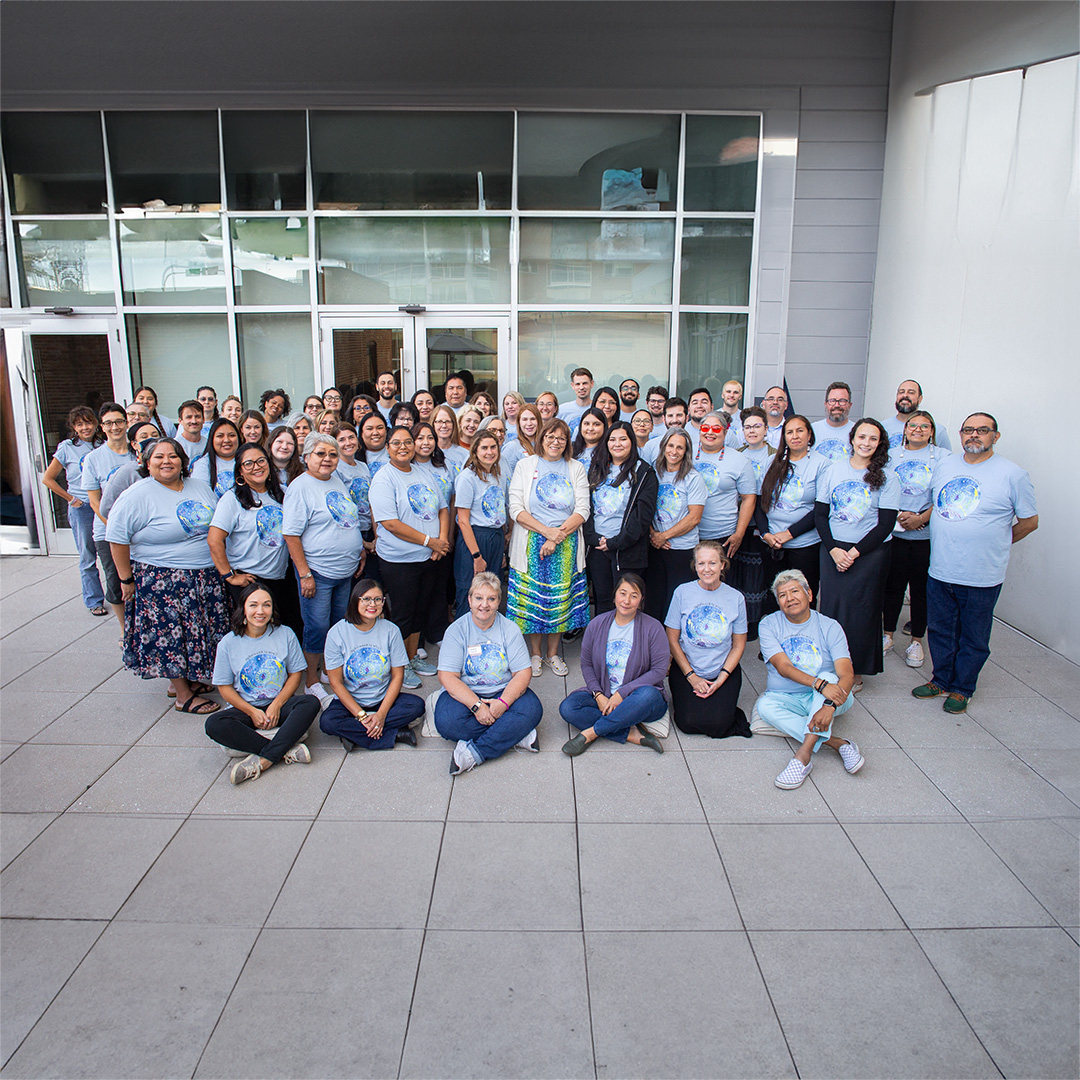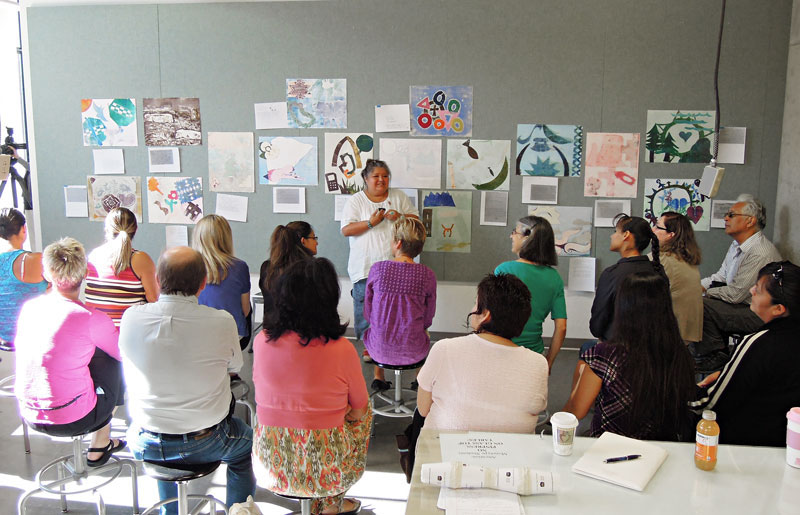
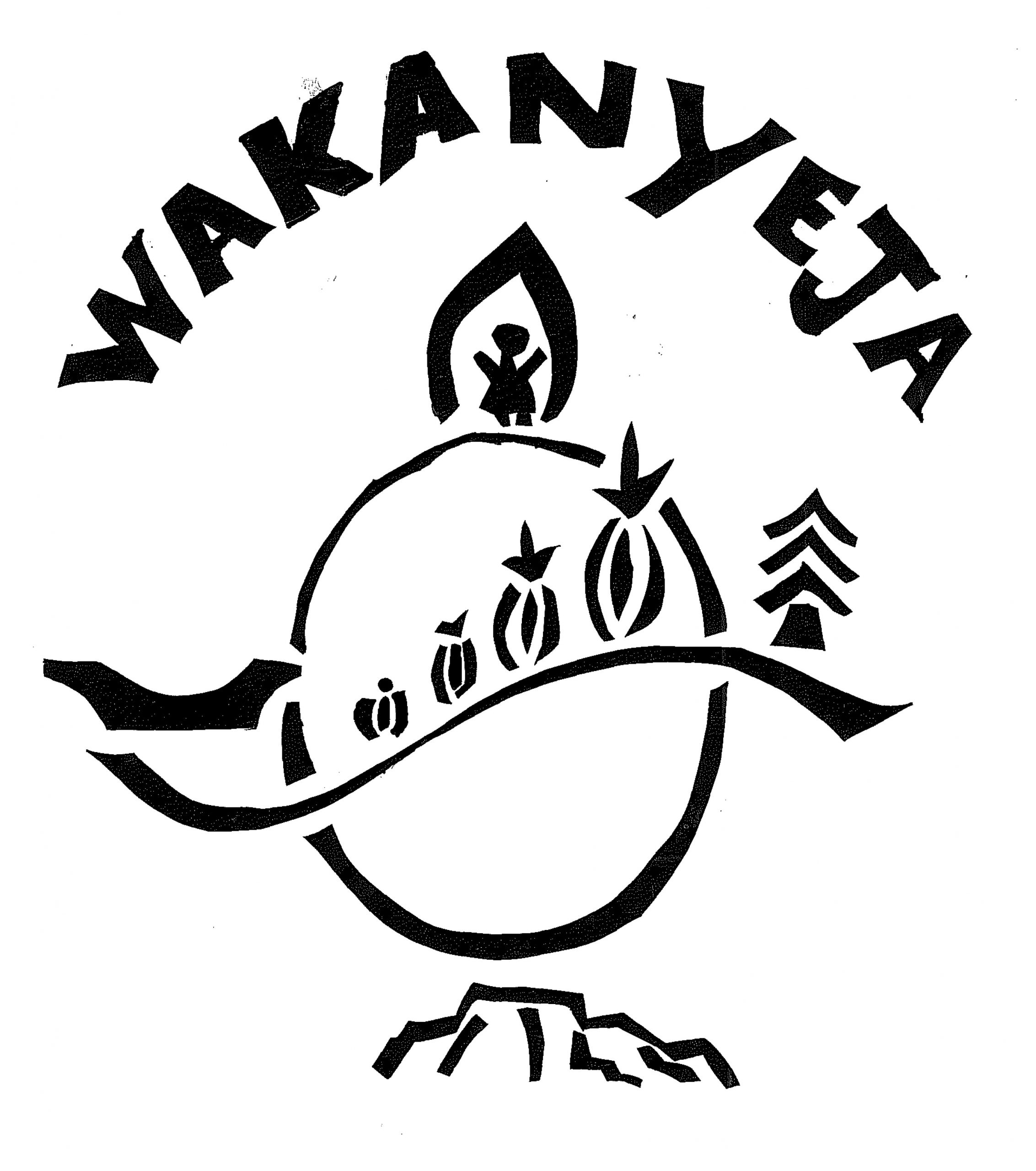 Four tribal colleges who are grantees in the Kellogg Wakanyeja “Sacred Little Ones” Early Childhood Education Initiative met last week in Boulder, Colorado.
Four tribal colleges who are grantees in the Kellogg Wakanyeja “Sacred Little Ones” Early Childhood Education Initiative met last week in Boulder, Colorado.
The teams came from across North America, including Ilisagvik College, Barrow, Alaska; College of Menominee Nation (CMN), Keshena, Wisconsin, Northwest Indian College (NWIC), Bellingham, Washington; and Southwestern Indian Polytechnic Institute (SIPI), Albuquerque, New, Mexico. Team members shared and reflected on the first year of accomplishments establishing early childhood initiatives. In addition, the meeting provided new opportunities for team learning and inquiry. This year’s theme focused the teams on ways to share project stories, drawing upon a systematic collection of information to demonstrate impact.
Many participants serve in various roles in their jobs, including program specialists, language and culture specialists, teaching professionals, parents, artists, and scholars. They are adept at pressing data and collaborating to improve the life, education, and opportunities for Native children.
The convening blended art, traditional Native family values and Native education working together to express their commitment to early childhood development using carefully collected and analyzed information.
Attendees participated in a video workshop and learned skills for audio, photo, video, and other visual media storytelling. This introduction into advanced multimedia tools combined with learning how others are using the technology should produce truly impact people with the integration of photo and video in the participants’ data collection and project sharing across a diverse audience beyond each tribal college.
They also spent a morning on Colorado trails with guided tours to hone their senses, connect them to their surroundings, and prepare them for reflection on their goals, visions, and dreams for themselves and their children.
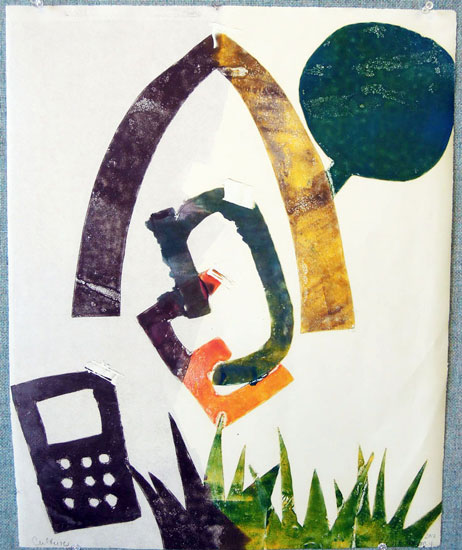 The participants collaborated in a print-making workshop with renowned Navajo artist, Melanie A. Yazzie, associate professor of art at the University of Colorado at Boulder. The screen prints of forced ink on paper brought forth stories of inspiration and life lessons. The final prints will be compiled into nine portfolios and sent to traveling to museum exhibits around the world, including Dubai, Australia, New Zealand, tribal communities, the American Indian College Fund in Denver, and one set will be held in the permanent collection at CU Boulder for further study by CU students and local, regional, and national artists.
The participants collaborated in a print-making workshop with renowned Navajo artist, Melanie A. Yazzie, associate professor of art at the University of Colorado at Boulder. The screen prints of forced ink on paper brought forth stories of inspiration and life lessons. The final prints will be compiled into nine portfolios and sent to traveling to museum exhibits around the world, including Dubai, Australia, New Zealand, tribal communities, the American Indian College Fund in Denver, and one set will be held in the permanent collection at CU Boulder for further study by CU students and local, regional, and national artists.
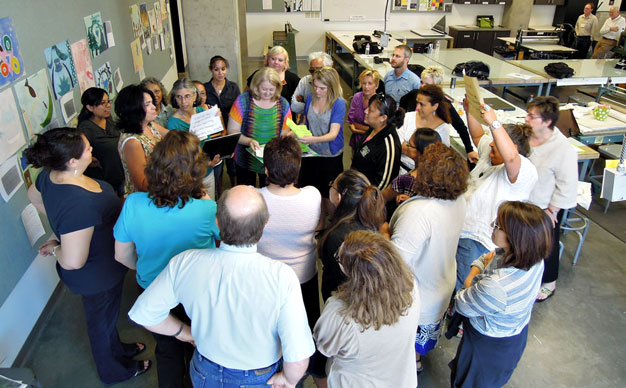 The cohort participants dispersed back across the continent to Alaska, Wisconsin, New Mexico and Washington to answer the questions generated during their time in Colorado. They will go back to continue collecting data and analyzing their findings so that they can disseminate lessons learned to other tribal colleges ultimately creating a culturally relevant process for addressing modern changes in early childhood education among Native communities.
The cohort participants dispersed back across the continent to Alaska, Wisconsin, New Mexico and Washington to answer the questions generated during their time in Colorado. They will go back to continue collecting data and analyzing their findings so that they can disseminate lessons learned to other tribal colleges ultimately creating a culturally relevant process for addressing modern changes in early childhood education among Native communities.
Blog and photos by Jaime Aguilar/Media Specialist for the American Indian College Fund

